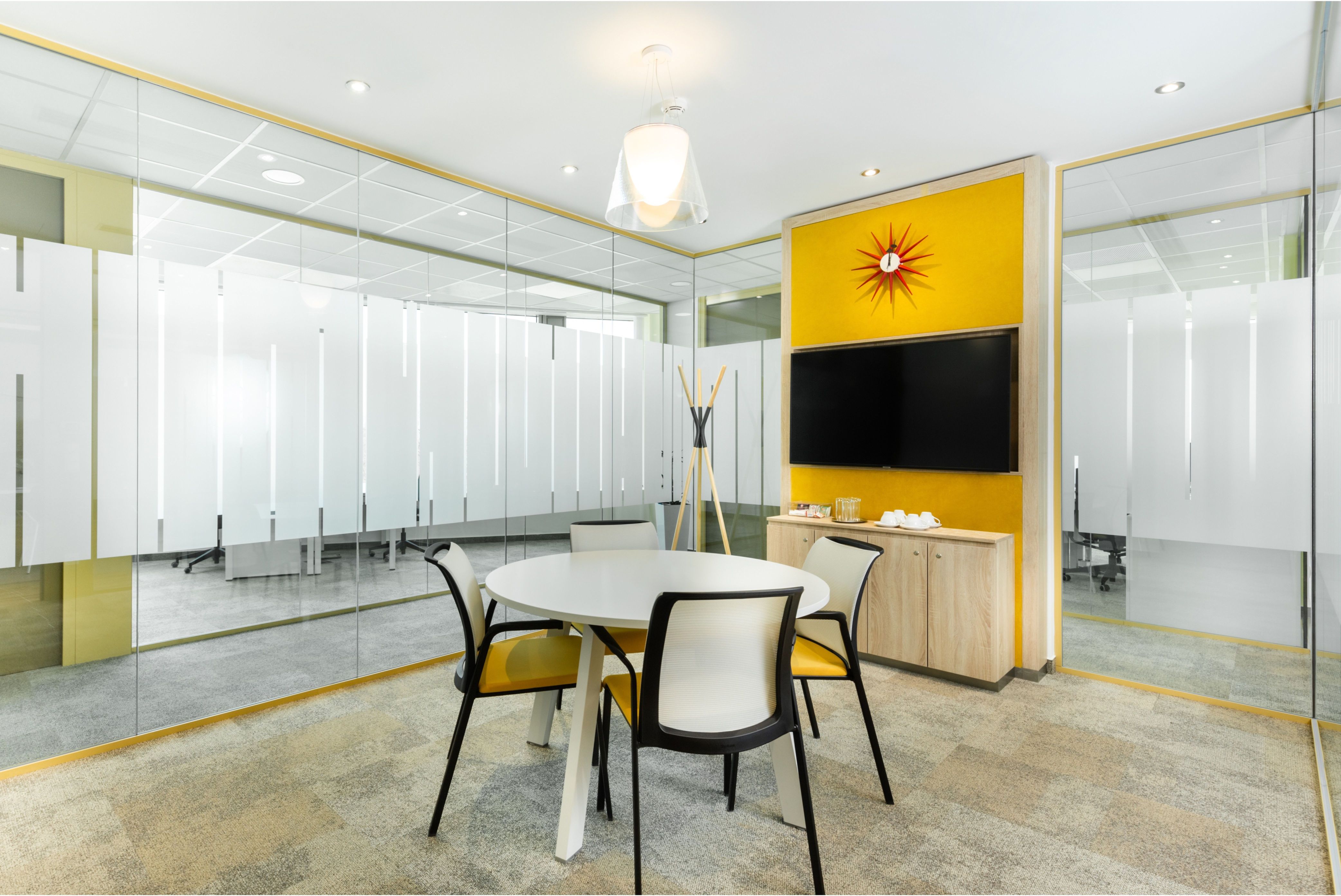Coronavirus Accelerates Changes in Office Design

Office design by Bánáti + Hartvig architects studio.
Approaches to office design and organization are changing in reaction to the coronavirus pandemic, accelerating a process already underway due to changing tenant and staff demands and increasingly stringent sustainability regulations and practices.
Office interiors are a central element of the concept, design, property and facility management of office projects. This is a response to ever more complex and sophisticated demands from office users, more stringent sustainability and environmental regulations, and health and safety issues related to COVID and its aftermath.
With hybrid office use (a blend of working from home and in a central space), design priorities are now based on communal areas, collaborative spaces and meeting rooms, according to Zsombor Barta, president of the Hungarian Green Building Council (HuGBC).
“The trend had already started before the pandemic to develop or restyle the office to create more interactive and flexible places, where creative ideas can be grown, human interactions are possible, and diverse working places are integrated,” he says.
“This is becoming even more important for the future. Also, the time has passed for over-crowded and fully packed offices places; mainly because of hygienic and pandemic issues,” Barta adds.
From an office provider perspective, ever more corporations are already switching their work policies from an office-centric to a human-centric approach and implementing hybrid workplace strategies, according to Hubert Abt, CEO of New Work, the leading CEE serviced office space provider.
“The headquarters of the company will not be the main place of work anymore, it will be the place for collaboration and meetings. Once the companies have gone through this change in culture, it will lead to a significant shift in space requirements,” he explains.
“There is now no need to drive two hours a day to read your emails. Offices can be effectively utilized by digitilization, such as booking space through a smart phone application,” Abt says.
Adapted Designs
Developers and designers need to adapt their office designs accordingly. Skanska is constructing the first phase of its latest Budapest project, the 67,000 sqm H2Offices, focusing on the needs of its users, according to the developer.
The complex has been designed to meet LEED and WELL “Platiunum” certifications along with the WELL Health & Safety Rating.
“We adapted very quickly to the new regulations and implemented the newest health measurements and we are also helping our tenants to be able to provide secure office space to their workers because people feel safer in the environment that we created,” comments Aurelia Luca, executive vice-president of operations for Hungary and Romania at Skanska’s commercial development business unit.
The developer’s previous office project, Nordic Light Trio, was awarded WELL “Core & Shell Gold” certification. Adherents argue that WELL-certified buildings positively impact employees’ performance and, therefore, the overall performance of their employers, retaining their value for an extended period and being truly future-proof investments.
There are currently two WELL-certified offices in Budapest and 8 pre-certified, according to the HuGBC.
“The building has a highly effective ventilation and air filtration system with microbe and mold control, water quality is also constantly controlled and monitored,” explains András Ábrahám, project director of Skanska’s commercial development business unit in Hungary.
“Excellent lighting conditions have been created in the workplaces thanks to the electric light glare control. The offices are designed to provide a pleasant temperature all year round and create a calm, noise-free environment for work,” Ábrahám says.
Safer Offices
Safety and technologies in offices are now more critical than ever in the pandemic environment.
“The adjustment to the new reality is still underway; it is a long-term process,” warns Katarzyna Zawodna-Bijoch, president and CEO of Skanska’s commercial development business unit in CEE.
“The main goal of developers should be the deepest possible understanding of clients’ needs and a close dialogue, which allows jointly developed tailor-made, safe solutions that meet their requirements, in terms of creating attractive workplaces, encouraging employees to return to their offices as well as developing future-proof projects that interest investors,” she says.
“Moreover, innovative technological solutions will undergo further development too. These include, for instance, contactless entry to an office as well as options to check the whereabouts of co-workers, adjusting the lighting and temperature to the needs of users, or booking a room. As technology is a crucial aspect of hybrid work, it has become an integral part of office space,” Zawodna-Bijoch adds.
Sustainability accreditation from independent, third-party sustainability organizations such as the U.K.-based BREEAM, the U.S.-based LEED and, increasingly, WELL, is now the norm for development in the office markets.
These organizations create new guidance that puts hygiene and the safety of workers at the heart of planning: besides creating flexible layouts and wider spaces for fewer people, they promote the application of durable materials for heavy cleaning, increased maintenance and cleaning of mechanical systems, creating health screening spots, and applying smart technologies to make contactless offices and to collect space utilization data, according to the architectural and design firm DVM group.
Access4You, which assesses assessability in the office, is also increasingly being integrated into office design. Atenor has been awarded a BREEAM “Excellent” sustainability rating for the RoseVille office project, designed by the Artonic Design Architect Studio.
“Achieving this rating is an important milestone in the development cycle as well as the acknowledgement of Atenor’s sustainability efforts. In addition to the sustainability certification, the developer is paying special attention to obtaining an Access4You’ Gold’ rating. The primary aspect of the development is to create a human-centered workplace,” says Zoltán Borbély, country director of Atenor in Hungary.
Valter Kalaus, managing director of Cresa Hungary, sees the impact of the pandemic on offices resulting in more collaborative spaces, more and smaller meeting rooms, indoor greenery, the provision of access to the outdoors and abundant natural light.
Concerning anti-pandemic measures, offices will include high-level technology, including sensors, temperature control and air quality measuring, and touchless systems. Regarding the impact on architectural and interior design, Kalaus argues that fewer desks will be required with different furniture for different activities and overall interior design catered more towards safe collaboration, including fewer large spaces and more separated areas.
This article was first published in the Budapest Business Journal print issue of January 28, 2022.
SUPPORT THE BUDAPEST BUSINESS JOURNAL
Producing journalism that is worthy of the name is a costly business. For 27 years, the publishers, editors and reporters of the Budapest Business Journal have striven to bring you business news that works, information that you can trust, that is factual, accurate and presented without fear or favor.
Newspaper organizations across the globe have struggled to find a business model that allows them to continue to excel, without compromising their ability to perform. Most recently, some have experimented with the idea of involving their most important stakeholders, their readers.
We would like to offer that same opportunity to our readers. We would like to invite you to help us deliver the quality business journalism you require. Hit our Support the BBJ button and you can choose the how much and how often you send us your contributions.









